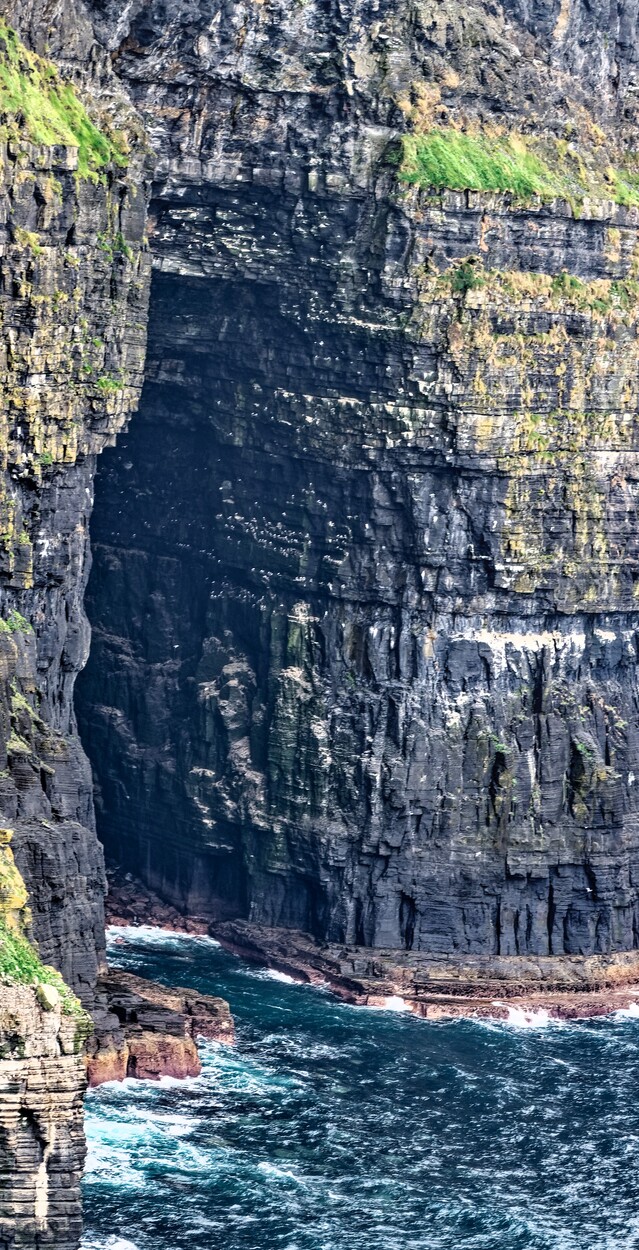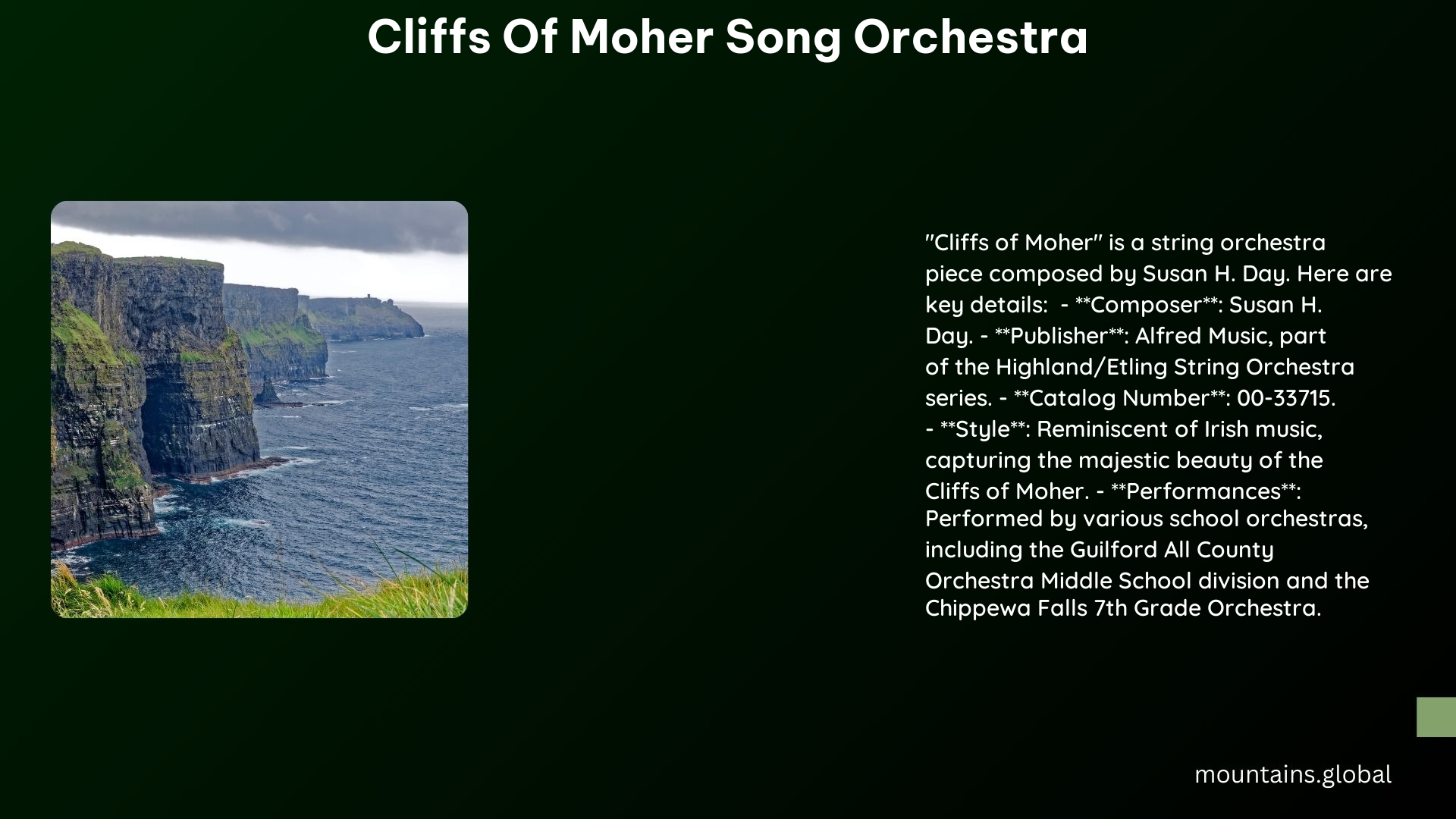The Cliffs of Moher song orchestra is a captivating string orchestra piece composed by Susan H. Day. This instrumental masterpiece, part of the Highland/Etling String Orchestra series, paints a vivid musical portrait of Ireland’s majestic Cliffs of Moher. Written in G major and D major, the composition employs various string techniques to evoke the rugged beauty and crashing waves of the Atlantic coastline. With its accessible first position parts and engaging melodic lines, this piece offers both educational value and concert appeal for string ensembles.
What Makes the Cliffs of Moher Song Orchestra Unique?

The Cliffs of Moher song orchestra stands out for several reasons:
- Programmatic nature
- Accessible difficulty level
- Variety of string techniques
- Evocative musical imagery
Let’s explore each of these aspects in more detail.
How Does the Piece Capture the Essence of the Cliffs?
Susan H. Day’s composition brilliantly translates the visual grandeur of the Cliffs of Moher into an auditory experience. The piece incorporates:
- A dance-like round section mimicking waves crashing against rocks
- Melodic lines that evoke the sweeping vistas of the cliffs
- Dynamic contrasts representing the changing moods of the Atlantic Ocean
These musical elements work together to transport listeners to the rugged Irish coastline, creating a vivid sonic landscape.
What Technical Aspects Make This Piece Accessible to Players?
The Cliffs of Moher song orchestra is designed to be playable by a wide range of string ensembles. Key features include:
- All parts written in first position
- Use of G major and D major keys
- Incorporation of various techniques that are challenging yet achievable
This thoughtful composition allows players to focus on expression and musicality while still developing their technical skills.
What String Techniques Are Featured in the Piece?

The composition showcases a variety of string techniques, providing an excellent learning opportunity for players. These include:
- Pizzicato
- Open string double stops
- Slurs
- Easy open string harmonics
By incorporating these techniques, the piece not only creates an engaging sound but also helps players expand their technical repertoire.
How Is the Piece Structured?
While specific structural details are not provided in the available sources, we can infer some aspects of the piece’s organization:
- Multiple movements or sections, likely corresponding to different aspects of the Cliffs of Moher
- A dance-like round section, possibly serving as a central or recurring element
- Alternating between G major and D major keys, potentially to represent different moods or scenes
This structure allows for a varied and engaging musical journey that mirrors the diverse experiences one might have when visiting the actual Cliffs of Moher.
Where Can Musicians Find the Sheet Music?
The sheet music for the Cliffs of Moher song orchestra is available from several reputable music retailers:
| Retailer | Product | Price |
|---|---|---|
| Alfred Music | Conductor Score | $9.00 |
| Alfred Music | Full Set (Score and Parts) | Varies by retailer |
| J.W. Pepper | Full Set (Score and Parts) | Contact for pricing |
| Sheet Music Plus | Full Set (Score and Parts) | $43.20 |
Musicians and conductors can choose the option that best fits their needs and budget.
What Are the Specific Details of the Published Work?
For those interested in the technical details of the publication, here’s what you need to know:
- Publisher: Highland/Etling (AP.33715)
- Total Pages: 124
- ISBN: 9781470657543
- UPC: 038081377087
These details can be helpful when ordering or cataloging the piece.
How Can Orchestras Incorporate This Piece into Their Repertoire?
The Cliffs of Moher song orchestra offers several advantages for orchestras looking to expand their repertoire:
- Educational Value: The piece provides an opportunity for players to practice various string techniques in a musical context.
- Programmatic Appeal: The evocative nature of the composition can engage audiences and add variety to concert programs.
- Accessibility: With all parts in first position, it’s suitable for a wide range of skill levels.
- Cultural Connection: The piece can be part of a themed concert featuring Irish or Celtic music.
Orchestras can consider programming this piece alongside other works inspired by natural landscapes or as part of a showcase of contemporary string orchestra compositions.
What Performance Opportunities Exist for This Piece?
While specific notable performances are not mentioned in the available sources, the Cliffs of Moher song orchestra is well-suited for various performance settings:
- School orchestra concerts
- Community orchestra performances
- Music festival entries
- Educational workshops and clinics
- Themed concerts celebrating Irish culture or natural wonders
The piece’s programmatic nature and accessible difficulty level make it a versatile addition to many types of performances.
How Does the Composition Process Reflect the Cliffs of Moher?
Susan H. Day’s composition process likely involved several steps to capture the essence of the Cliffs of Moher:
- Research: Studying the geography, history, and cultural significance of the Cliffs of Moher.
- Inspiration: Drawing musical ideas from the visual and emotional impact of the cliffs.
- Technical Considerations: Crafting parts that are both evocative and playable by student orchestras.
- Orchestration: Choosing string techniques that best represent different aspects of the cliffs and surrounding ocean.
This thoughtful approach results in a piece that is both educational and artistically satisfying.
What Role Does This Piece Play in Music Education?
The Cliffs of Moher song orchestra serves several important functions in music education:
- Technique Development: Students practice various string techniques in a musical context.
- Ensemble Skills: The piece encourages careful listening and coordination among players.
- Musical Interpretation: The programmatic nature of the work helps students connect music with visual and emotional concepts.
- Cultural Awareness: Performing this piece can spark interest in Irish geography and culture.
By incorporating this piece into their curriculum, music educators can provide a rich, multifaceted learning experience for their students.
References:
1. Alfred Music – Cliffs of Moher: String Orchestra Conductor Score & Parts
2. J.W. Pepper – Cliffs of Moher by Susan Day
3. Sheet Music Plus – Cliffs of Moher – String Orchestra
